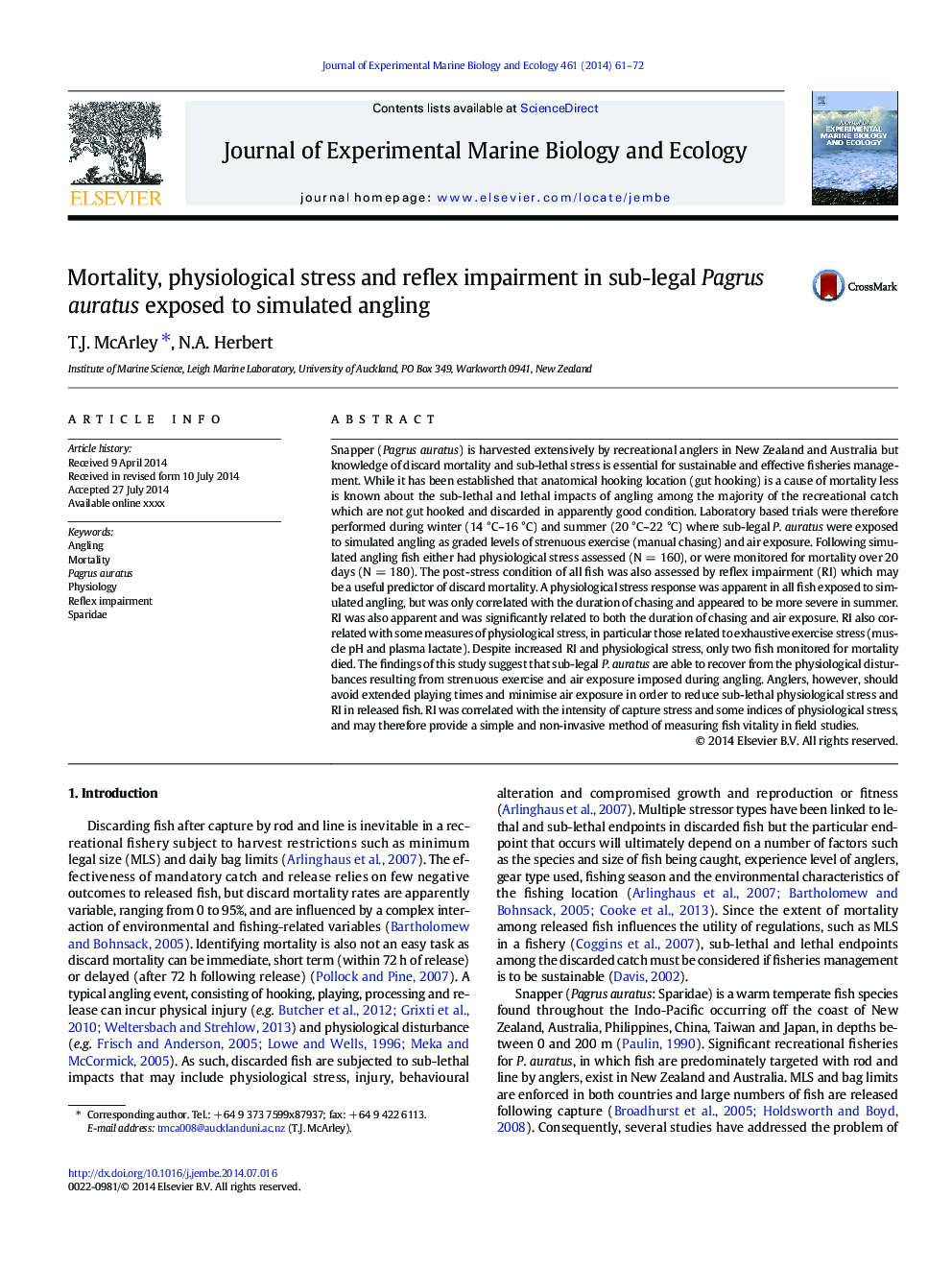| Article ID | Journal | Published Year | Pages | File Type |
|---|---|---|---|---|
| 6303909 | Journal of Experimental Marine Biology and Ecology | 2014 | 12 Pages |
Abstract
Snapper (Pagrus auratus) is harvested extensively by recreational anglers in New Zealand and Australia but knowledge of discard mortality and sub-lethal stress is essential for sustainable and effective fisheries management. While it has been established that anatomical hooking location (gut hooking) is a cause of mortality less is known about the sub-lethal and lethal impacts of angling among the majority of the recreational catch which are not gut hooked and discarded in apparently good condition. Laboratory based trials were therefore performed during winter (14 °C-16 °C) and summer (20 °C-22 °C) where sub-legal P. auratus were exposed to simulated angling as graded levels of strenuous exercise (manual chasing) and air exposure. Following simulated angling fish either had physiological stress assessed (N = 160), or were monitored for mortality over 20 days (N = 180). The post-stress condition of all fish was also assessed by reflex impairment (RI) which may be a useful predictor of discard mortality. A physiological stress response was apparent in all fish exposed to simulated angling, but was only correlated with the duration of chasing and appeared to be more severe in summer. RI was also apparent and was significantly related to both the duration of chasing and air exposure. RI also correlated with some measures of physiological stress, in particular those related to exhaustive exercise stress (muscle pH and plasma lactate). Despite increased RI and physiological stress, only two fish monitored for mortality died. The findings of this study suggest that sub-legal P. auratus are able to recover from the physiological disturbances resulting from strenuous exercise and air exposure imposed during angling. Anglers, however, should avoid extended playing times and minimise air exposure in order to reduce sub-lethal physiological stress and RI in released fish. RI was correlated with the intensity of capture stress and some indices of physiological stress, and may therefore provide a simple and non-invasive method of measuring fish vitality in field studies.
Related Topics
Life Sciences
Agricultural and Biological Sciences
Aquatic Science
Authors
T.J. McArley, N.A. Herbert,
